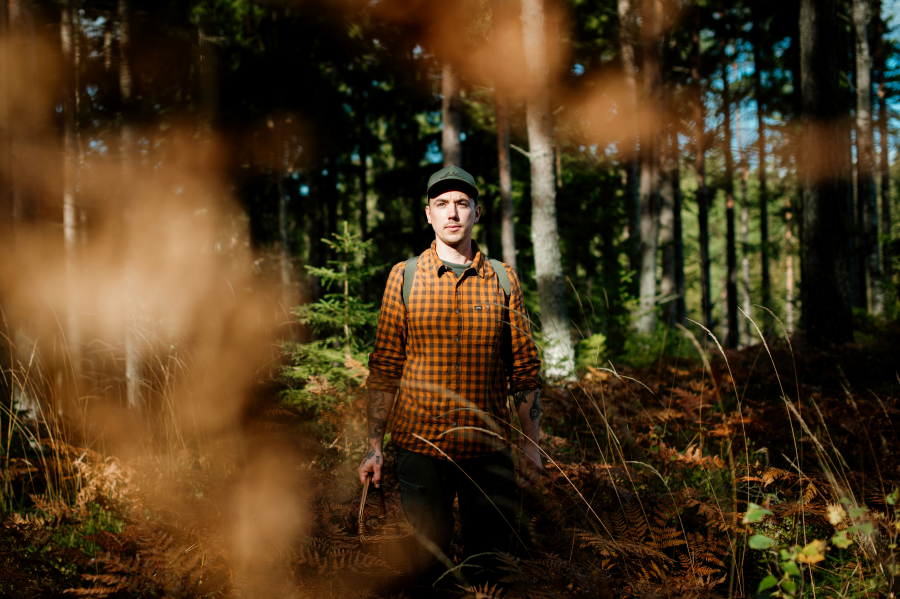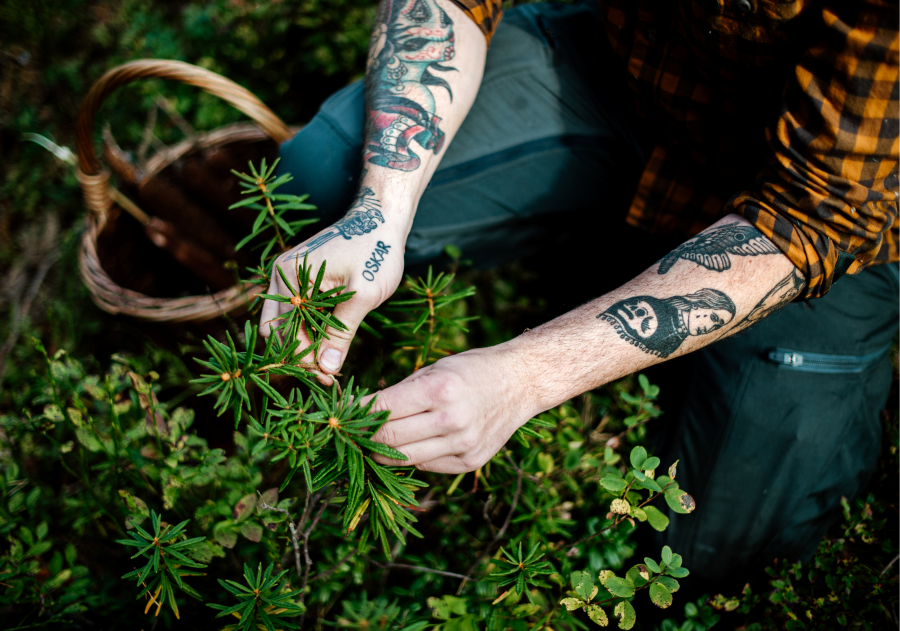Tips on wild plants to pick in nature
Even if nature’s pantry is generous, we should think that the pantry is not endless. Lundhags friend Niki Sjölund is a chef and professional picker of wild mushrooms, berries and plants. From Niki, here are some things to think about when picking.

Since I work closely with what grows in nature, it’s a bad idea for me to go to one place and pick up everything of, for example, one single plant. I ruin it for myself as well as for other people and nature.
What is classed as weeds are not so sensitive to picking even if you can root out weeds. Goutweed (Aegopodium podagraria), for example, can endure heavy picking but should not be picked clean each time. Wild garlic (Allium ursinum) is another popular plant. Often found in large quantities, though you should not, as some do, rip up the entire plant – onion and all. I cut or remove the leaves or clusters. Also, remember that wild garlic is protected (but not threatened) in parts of Blekinge.
Try to find one or several places that are large enough so that the plant has a chance to recover from indentations. You just have to think a bit before. When the season for flowers ends and plants have released their seeds, you can pick the remaining clusters. It doesn’t take as much from the clump. You can even make capers from the old seed cases.
But it’s another game with mushrooms. They grow completely differently, and you only pick the foot and hat of the mushroom. The plant itself or mushroom grows under the ground. You can pick the whole foot and hat, without spoiling recovery.
Seven good things to pick
- Garden sorrel (Rumex acetosa) or sheep sorrel (Rumex acetosella) have a wonderful sour taste. I eat these fresh. It is oxalic acid that gives its acidic taste, the same acid as rhubarb. Even mountain sorrel and wood sorrel can be worth a taste. Delicious snacks when you’re out hiking. Just pick a handful and start chewing.
- Hill mustard, or warty cabbage (Bunias orientalis), is a wonderful plant that most have seen without knowing what it is. It usually grows in the late summer. Look at any road embankment and you will surely find it. It grows with yellow flowers and can be rather large, with stems up to one meter high. It has a wonderful scent and a nice taste. It’s easily blanched or used fresh in salads. Or make a pie from it.
- Winter cress (Barbarea vulgaris) is similar to warty cabbage if you’re not used to picking. It tastes like rape seed, but I think that it’s better. You can have fresh flowers as a topping on pizza. When cooked in the oven, the stems and leaves become slightly nicer.
- Wild horseradish (Armoracia rusticana) is just terrific. It is very common, but still an unknown for most people. In former times, wild horseradish was grown a lot and even used as payment. It has often spread to old cottages and some fields. Besides the root, the flowers are also good. Used as topping on grilled sausages, for example. Wild horseradish is much stronger than store-bought horseradish. Hotter, like wasabi. You have to be careful and not pick the whole plant.
- Bog myrtle (Myrica gale) is another seasoning. But perhaps more like a spice in food. Before, bog myrtle was used to make beer when hops were unavailable. Even used in snaps.
- Woodruff (Galium odoratum) is another old spice used in alcohol. In Germany, woodruff is usually used in white wine (so-called May wine). It has the full-bodied taste of cinnamon and vanilla. Works also well in sponge cake and as flavoring in ice cream.
- Garlic mustard (Alliaria petiolata) is a two-year plant. In the first year, the root tastes like a creamy horseradish. Perfect for making a vinaigrette. Or just eat it raw with a good dip instead of a carrot. The leaves in particular even work in pesto, to add a slight onion taste.

You can find several tips in Niki Sjölund’s practical book about picking wild herbs, leaves, flowers, berries and mushrooms in Swedish ”Vildplockat : ätliga örter, blad, blommor, bär och svampar från den svenska naturen” (Natur och Kultur). Check even Niki’s @neonatur on Instagram and Youtube.
